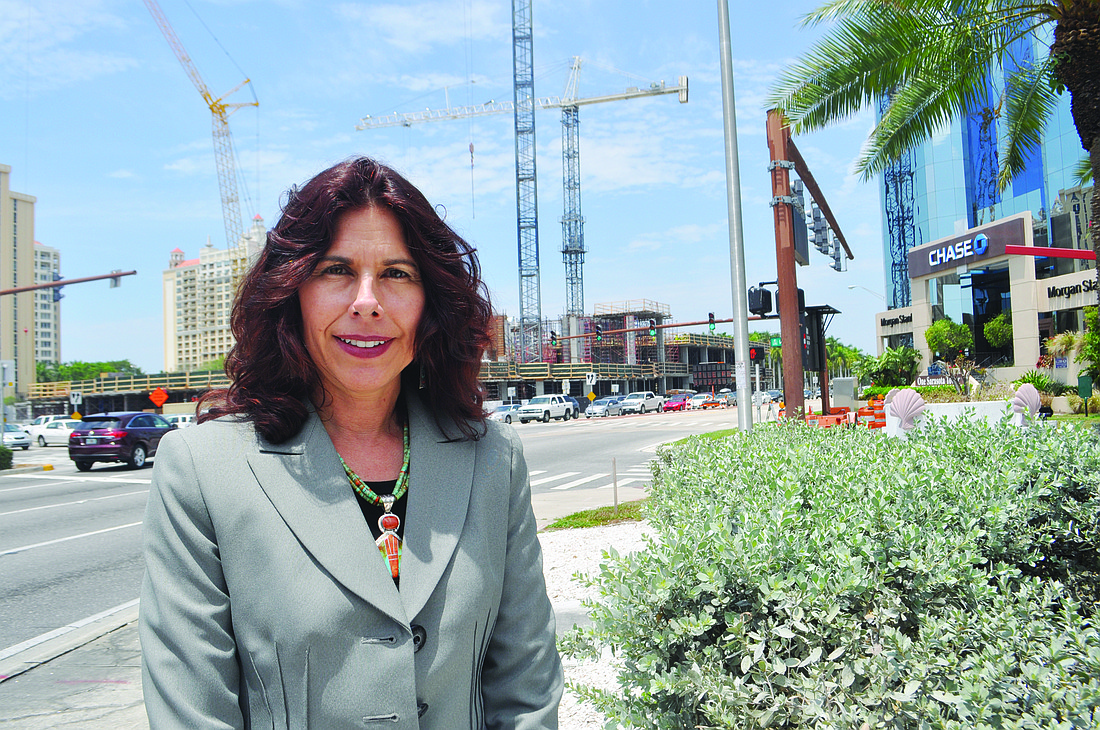- April 25, 2024
-
-
Loading

Loading

As an engineer with the city of Sarasota, Alex DavisShaw has a lot on her plate. From examining the city’s long-term transportation plans to evaluating new development projects to coordinating a shoreline renourishment project with the Army Corps of Engineers, DavisShaw’s job requires her to be willing to take on a new subject at a moment’s notice. We talked with DavisShaw about the status of transportation in a city increasingly plagued by congestion — and about how she juggles her different responsibilities.
Q: A lot of people yearn for the same level of service on our roadways that we had a decade or so ago. Has the city passed a point of no return when it comes to traffic?
A: I think one of the challenges with transportation is that, while the city controls the land use we want within our borders, we don’t control the land use that happens outside of the city. We frequently will get trips into the city from outside of the city. We've got a lot of the entertainment, a lot of the jobs. So as other areas grow — where we have no say in policy — we will continue to get traffic. Part of that is because we have successful venues out here and want them to be successful. But that does mean expecting all the different areas that are growing to contribute to traffic in our community. So I would say that an increase in traffic will continue.
I have seen, in the past, articles written in the ’50s and ’70s saying the same thing — “How can we put up with this traffic?” You look at what they had then, and today we’d be like, “What are they talking about?” I think that’s always been something that's been discussed because it does impact people. One of the things we’re talking about now is how, then, do we handle our community — the areas we have control over — so we have a good quality of life?
Q: The city motto is “Where urban amenities meets small-town living.” How do you balance the urban and the small-town feel at the same time?
A: Traffic is somewhat like water, but somewhat not like water. If your pipe is clogged, water doesn’t pick what time it’s going to flow. It doesn’t have a choice in the matter. It goes where it goes. What we’re looking at, as we have a community discussion, is two parts of that.
One, there are things physically that can be done to make the system work as efficiently as it can in the parameters we have. The other thing — where we’re different from just general pipe flow — is can we offer or encourage people to make different choices as to how they use the network?
Q: Is there a demand for other modes of transportation? How much use might they get?
A: That’s one of the things we want to talk to both the community and the commission about. There are some communities that have made big strides in improving other modes. We need to talk about what that means for us. There are some communities that have a high rate of walking. That generally happens where people live and work within a 10-minute walk. What do we do with our urban centers so we can make sure we have the right accommodations to get people who want to live where they work to be able to afford that?
Q: What’s it like dealing with a diverse array of issues?
A: I like variety. It allows me to get involved with all sorts of different projects. It does mean frequently I’ve had a project in a realm that’s completely new to me.
One of my first projects is when we did the bayfront. We were getting a historical piece of art there with historical portals. I was assigned to write the verbiage that went with that. That’s completely outside of any engineering project I’ve ever done, but it was really neat. I had the chance to do some history and research on what those graphics were going to depict and put together some language. It keeps things interesting for me. It’s a wonderful community; it’s great to be able to serve whatever the need is. But it can be a challenge to get up to speed when something unexpected and unusual comes along.
— David Conway